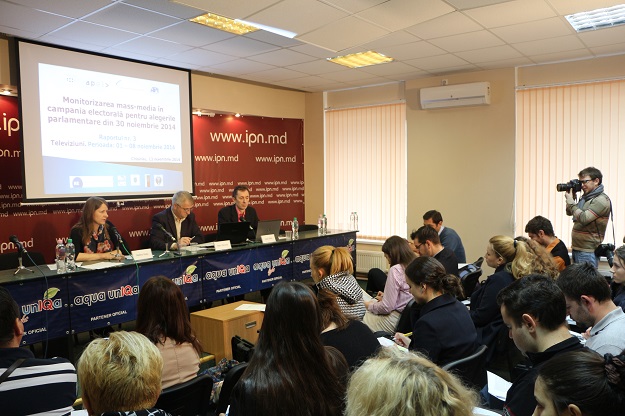
Petru Macovei, executive director of the Association of Independent Press (AIP), claims that the messages that the majority of media outlets deliver to the public can be called “partisan”.
Speaking about the conduct of the monitored print media, the expert said that newspapers preferred presenting news from a single source. “Very many of them were biased. The reporters who wrote articles or the authors of the texts published in newspapers shared their opinions, and those opinions were not balanced, failing to provide alternative views. Thus, only half of the texts published in newspapers provided unbiased information,” he mentioned.
Another problem is related to the non-involvement of the media into the electoral education of citizens. “It is very unfortunate, because thus media outlets fail to fulfill their public task of providing information of public interest to citizens. The elections of 30 November are a very important democratic practice, and mass media should help citizens in exercising their vote,” Petru Macovei underlined.
As for the sources used by journalists in their materials, the majority of them were politicians, especially men, according to the report.
Online media were monitored under the same aspects, and their situation, as stated by the Independent Journalism Center (IJC) Director Nadine Gogu, is little different than the situation in print media. According to the expert, there have been many problems in terms of balance in conflicting news items. “Overall, 73% of controversial materials quoted the position of a single party in conflict. So, they were unbalanced in terms of sources,” Nadine Gogu mentioned.
Furthermore, according to the report, online media prefer presenting representatives of parliamentary parties, either governing or opposition. “Representatives of the extra-parliamentary opposition or independent candidates are less frequent appearances in the news items published by these five online portals,” the expert said.
The majority of controversial materials on the radio stations monitored by media NGOs were balanced, and the authors’ position was unbiased. Overall, according to the report, the number of conflicting news items was relatively small.
Vasile State, director of the Electronic Press Association (APEL), spoke about televisions, and he mentioned that there had been over 100 more electoral news items during the monitored period than in the previous report.
According to him, of all conflicting news items, about 60% were written based on several sources of information, and about 50% contained violations of professional standards. The expert also underlined that no television managed to show complete lack of bias in newscasts.
The results of an opinion poll produced by the Marketing and Polls Institute IMAS for the IPN news agency were presented on the same day. According to the poll, the question about the type of mass media that respondents find the most objective from the perspective of political news was answered as follows: 57% said that televisions are the most objective in political news; 18% said the Internet; 5% mentioned radio stations; and 4% - newspapers.
The third report on monitoring mass media in the electoral campaign has been produced by the Association of Independent Press (AIP), the Electronic Press Association (APEL) and the Independent Journalism Center (IJC).
Photo from the press conference










